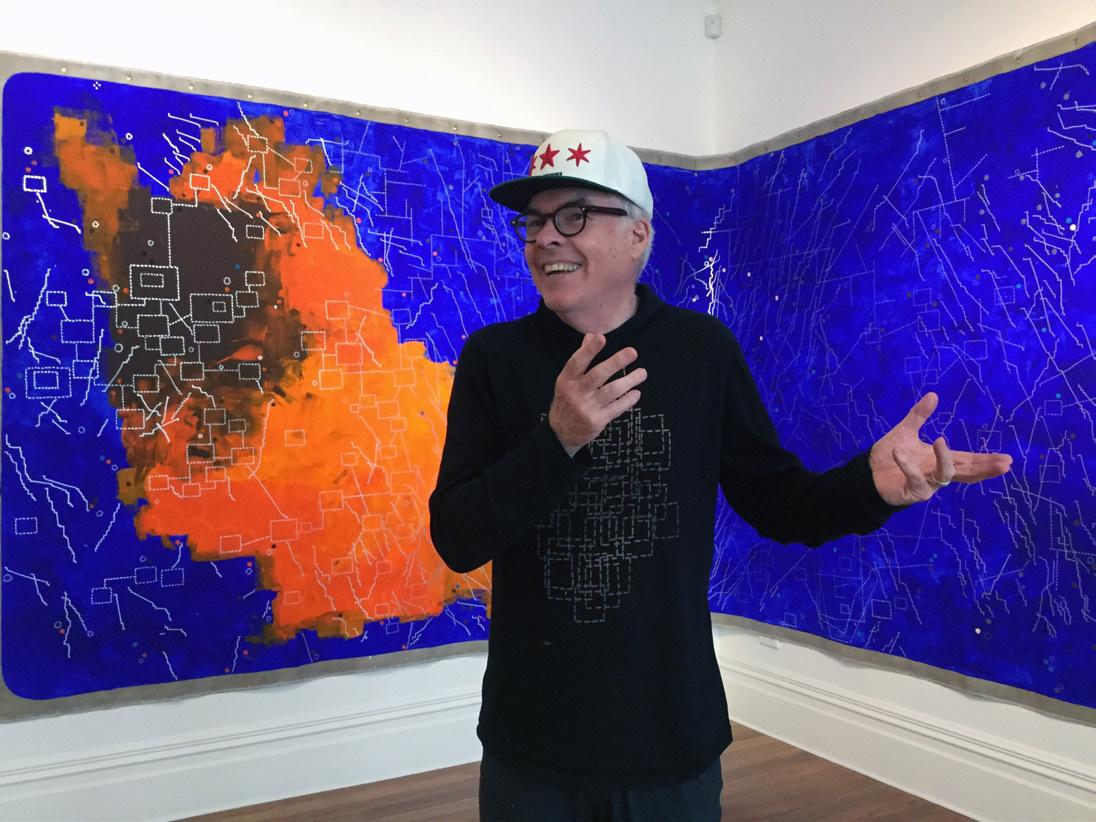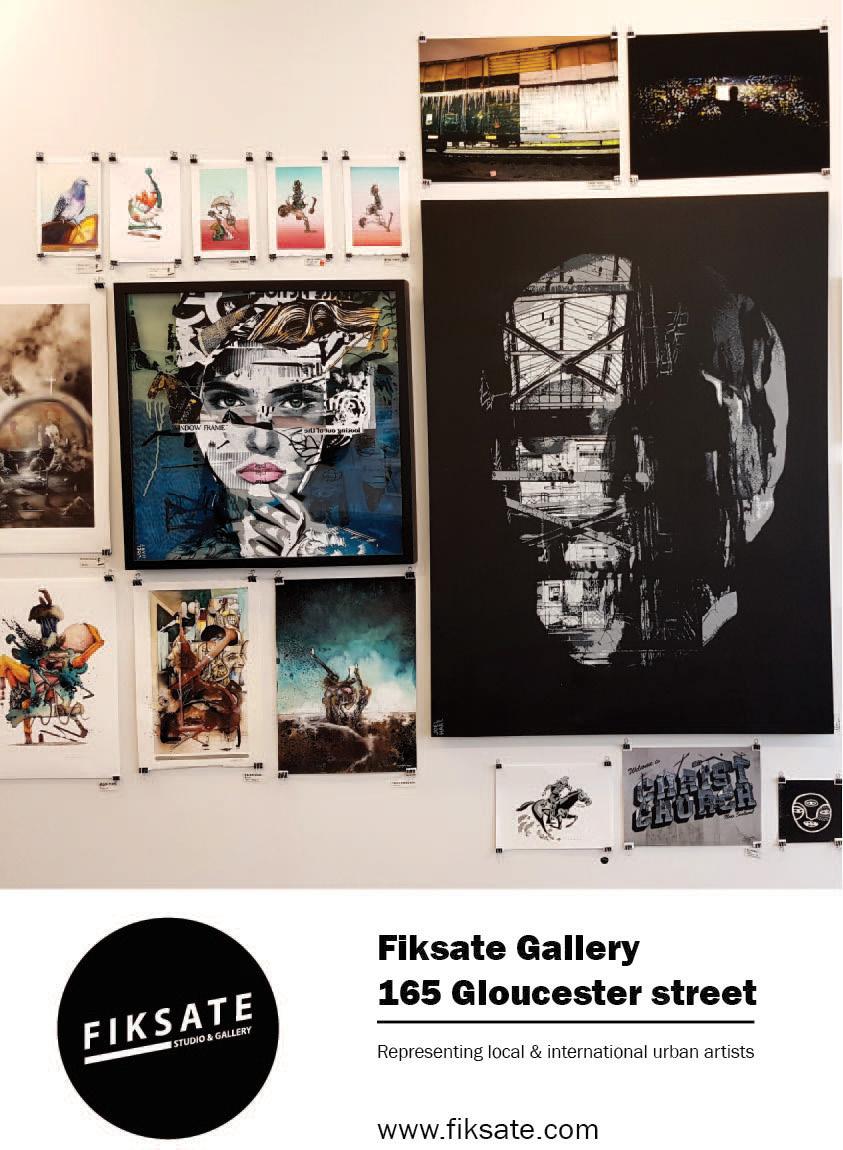
6 minute read
AT THE GALLERIES
from Artbeat June 2020
by warrenfeeney
Art galleries in Ōtautahi Christchurch and Waitaha Canterbury have reopened following six weeks in lockdown and June’s Artbeat is giving due attention to exhibitions that are newly opened, or delayed or now reopening and back on our radar. AT THE GALLERIES
→ Ben Lysaght, Set, 2020, oil on linen, 50.8 x 61cm
Advertisement
Recently completing his Bachelor of Fine Arts (Hons) at Massey University, Wellington-based painter Ben Lysaght returns to his home town for his first solo exhibition at the Ashburton Art Gallery. Once a Wilderness brings together paintings created over the past year exploring the dilution of wild areas such as greenhouses, winter gardens and pockets of bush. Lysaght believes that, for the most part, ‘wilderness’ is dead. We still love the idea of a wilderness, an untouched land to discover… but what we are left with is manufactured wild areas. These spaces exist in stark contrast to the wilderness as a site untouched by humans.
Lysaght’s paintings explore many imitations of the wilderness with a focus on botanic gardens and greenhouses, critiquing these Eurocentric institutions and examining their limitations and possibilities. Historically they were filled with plants taken from the colonies as a grand display of power and scientific wonder. When they were first conceived botanical gardens were a way to organise the plant world according to the classifications of Western science, while still demonstrating the wealth and power of the elite. The greenhouses acted as the most surreal and spectacular facet of this demonstration, while creating the illusion of being elsewhere.
Ben Lysaght, Once a Wilderness Ashburton Art Gallery 327 West Street 11 June – 31 July
↑ Moana Currents: Dressing Aotearoa Now (installation image)

Canterbury Museum has picked up where it left off before the lockdown with the fashion exhibition Moana Currents: Dressing Aotearoa Now. Produced and toured by the New Zealand Fashion Museum, the exhibition looks at how New Zealanders dress today and the way various threads drawn from across Te Moana-nui-a-Kiwa (the Pacific Ocean) are creating a distinctive Aotearoa New Zealand style. Curators Doris de Pont and Dan Ahwa have selected pieces from emerging and established New Zealand designers exploring themes about technology, as well as heritage craft techniques like stitching and weaving and the evolution of cultural motifs. See Trelise Cooper’s take on the muumuu, a merino wool wrap by Emilia Wickstead that evokes a mukakaitaka (flax-fibre cloak), and street wear by hip hop artist Bill Urale aka King Kapisi, while art jewellery pieces from Neil Adock, KereamaTaepa, Fran Allison and Zelda Murray explore traditional forms using materials and technologies in new ways.
Moana Currents: Dressing Aotearoa Now Canterbury Museum Rolleston Avenue Until 6 September
↑ Francis Van Hout, The Dancing Moon, 2020, oil on panel, 460 x 610 mm

In his new exhibition at City Art Depot, Francis van Hout moves away from the geometric abstraction of much of his recent work to explore shapes that float and wobble, repel and attract, contract and expand, cohering into unstable chains of echoes, patterns and connections. Figurative forms balance precariously, recklessly, like jugglers or acrobats for whom motionlessness is an impossibility. In their uncluttered legibility, these nervous, shifting forms are remindful of Māori rock drawing motifs, Henry Moore’s perforated figures, 1950s’ interior design and 1960s’ Op Art, here rendered in a muted, muddied, more complex palette. The title of the exhibition is taken from The Chills’1992 Single, Rolling Moon’. There is tension within the uneasy proximity between these constrained forms – an uneasiness so pertinent to today’s bubblewrapped, bubble-burst preoccupations, but there is also a playfulness in the bulging shapes, the colourful spheres, even the frames, painted within the parameter of the canvas as paintings held within paintings on the gallery wall.
Francis van Hout, The Rolling Moons City Art Depot 96 Disraeli Street 16 June – 8 July
↑ John Reynolds, ‘In the street I was lost…’ 2020, acrylic and oil paint marker on linen, 2100 x 7400mm

With his exhibition ‘In the street l was lost...’ John Reynolds extends his ‘Lost Hours’ series, which began by pondering Colin McCahon’s disappearance in Sydney on the eve of his Biennale retrospective in 1984. Reynolds traverses a parallel landscape across a magnificent panoramic painting. He becomes the wanderer, leaving a trail of silver lines which track and map through a drifting entanglement of location, time and memory. Viewers easily slip into similar meanderings, losing themselves in their own meditative journeying. Reynolds paints, draws and writes with a light touch. Each gesture is fresh and the work is open-ended. Amongst texts, written in pencil directly on the wall, Reynolds quotes Francis Bacon: ‘The job of the artist is to deepen the mystery.’ Through a series of works on paper Reynolds quotes John Gribbin who, in his introduction to quantum physics, ‘Six Impossible Things’, wrote that we might understand the mysteriousness of our world with six fundamental ‘solaces’, beginning with: The world does not exist unless you look at it. John Reynolds is a skilful artist and ‘Ín the street I was lost…’ is a thoughtful and visually rich exhibition.
John Reynolds, ‘In the street I was lost…’ PGgallery192 192 Bealey Avenue 22 June – 17 July
↑ Daniel Shaskey, Working Marquette for kiosk in Domino Domino, 2020

Domino Domino builds on the contributions of Daniel Shaskey, Luke Shaw, and Phoebe Hinchliff to their previous exhibition Sympathetic Resonance at The Suter Art Gallery Te Aratoi o Whakatū, Nelson. Each of the artist’s practice involves recording, or documentation with a focus on the transmissive qualities of various media. In these new works the artists are working from and beyond the initial provocation to reject time and space as a limitation on producing and creating. The resulting work employs publishing, moving image practice, tactics of architectural re-arrangement and sound performance in order to layer and blur exhibition histories and locations.
Daniel Shaskey, Luke Shaw, and Phoebe Hinchliff, Domino Domino The Physics Room 301 Montreal Street 20 May – 5 July 2020
↑ Simon van der Sluijs, Grief, 2020, charcoal, 460x520mm

Part III of Simon van der Sluijs’s trilogy, The Anatomy of Melancholy is titled Lost & Found. As in Parts I and II (Identity and Dissectum) the artist used a variety of mediums to explore this theme. In Part III Lost & Found, large charcoal drawings possess an arresting stillness, and forty small monochromatic watercolours titled Journal of Loss, are a project in itself, acting as a diary of the artist’s thought processes. Drawings and watercolours touch upon notions of ‘losing and finding’ - loss of innocence or youth, loss of those we love and the process of coping. The exhibition also features a series of mixed media sculptures of dogs, possibly family pets, varying in size from very large to very small. Lost or found each has its own narrative, a reminder of unconditional love and that they too can understand loss.
Simon van der Sluijs, The Anatomy of Melancholy: Part III Lost & Found Little River Gallery Christchurch Akaroa Road, Little River 6 – 30 June
↑ Rhonye McIlroy, Portrait of Sir Michael Jones, 2020, acrylic on board

Rhonye Mcllroy does more than simply paint portraits of historical and contemporary figures, she captures the curious and complex realities of their lives in numerous paintings that include Portrait of Sir Michael Jones. All Black Michael Jones was ‘almost the perfect rugby player,’ but he is also an influential leader of his Auckland church, a businessman and leader for the Pacific island community, knighted in 2017 for his work with young Pacific Islanders.
Rhonye Mcllroy, Stone to Flesh and AnnekeBester, Sister Water Windsor Gallery 386 St Asaph Street Until 13 June









